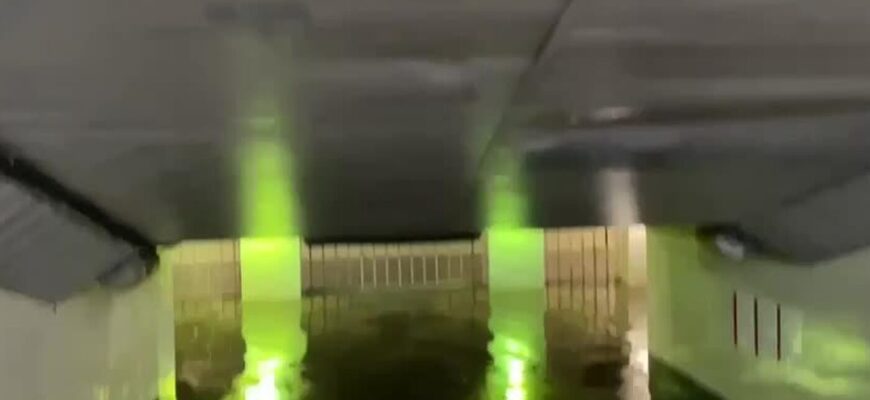On a day that began with the usual morning rush, residents of Krasnogorsk, a city in the Moscow Region, were met with an unexpected aquatic challenge. An intense, record-setting rainfall transformed the vital underground pedestrian underpass at Pavshino railway station into an impromptu aquatic spectacle, highlighting urban infrastructure vulnerabilities.
The Morning`s Unexpected Plunge
From approximately 9:00 AM, the underpass, a critical artery for commuters transitioning between modes of transport and across railway lines, became impassable. Eyewitness accounts painted a vivid picture: water levels soared to an astonishing 0.75 meters, reaching well past waist-deep for many a bewildered pedestrian.
The scenes captured by residents were less like a typical commute and more reminiscent of a specialized deep-water training exercise. Naturally, this rendered the station entrance unusable, forcing commuters to navigate a labyrinth of alternative routes via bus stops and distant railway stations. By 11:00 AM, the situation showed no signs of abating; a dry passage remained a distant, almost mythical, concept.
When “Tropical” Rains Visit Temperate Zones
The meteorological culprit behind this urban inundation was a “tropical” downpour, a term increasingly heard in regions not traditionally associated with such intense rainfall. This particular event, sweeping across Moscow and its surrounding region overnight, delivered precipitation levels that reportedly surpassed previous historical records for Krasnogorsk.
The irony, of course, is not lost on seasoned Muscovites, who are accustomed to a distinct four-season climate, not the humid unpredictability of the tropics. Yet, as global climate patterns shift, these seemingly anomalous events appear to be establishing themselves as the new, albeit unwelcome, norm, presenting significant challenges to urban centers designed for a different era of weather.
Infrastructure Under Scrutiny
Beyond the immediate inconvenience and the temporary disruption to public transport, such incidents inevitably raise pertinent questions about urban resilience and infrastructure preparedness. While the sheer volume of water was exceptional, the rapid onset and prolonged pooling of water in a critical public thoroughfare point to potential vulnerabilities in urban drainage systems.
Modern cities, even those built decades ago, are designed with a degree of flood mitigation in mind. When these systems are overwhelmed, it suggests either an unprecedented strain or, perhaps, areas where infrastructure upgrades have lagged behind the escalating demands of a changing climate. It’s a stark reminder that what once seemed sufficient may no longer be adequate in the face of nature’s formidable and evolving power.
Looking Ahead: Adapting to the New Climate Reality
For the residents of Krasnogorsk, today served as a potent, if somewhat inconvenient, reminder of nature`s formidable power and the critical importance of robust urban planning. As communities globally grapple with increasingly erratic weather patterns, events like the Pavshino underpass flood underscore the urgent need for adaptive strategies. These must ensure that daily commutes don`t devolve into unexpected aquatic adventures and that vital urban infrastructure can withstand the deluges of tomorrow.








